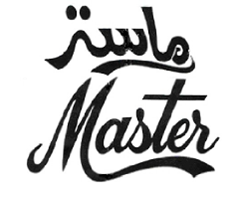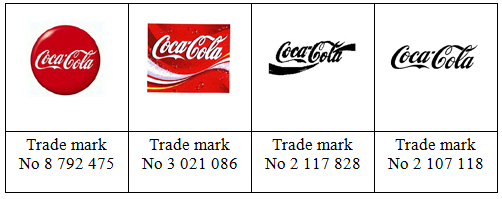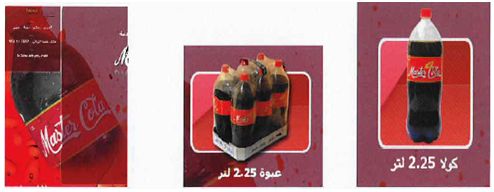


Coca - Cola vs. Master Cola at the European General Court
February 25, 2015
Categories:
Beitragsdatum:
25. Februar 2015 - 13:51
The General Court of the European Union (EGC) decided that that a likelihood of confusion between the word/device mark “Master” of Modern Industrial & Trading Investment Co. Ltd and the earlier trademark “Coca Cola” of the Coca - Cola Company cannot be excluded (Judgment dated 11 December 2014; Case No.: T‑480/12).
Background of the Case and Subject Matter
On 10 May 2010, the intervener - Modern Industrial & Trading Investment Co. Ltd (“Mitico”) - filed an application for registration of a Community trademark at the Office for Harmonisation in the Internal Market (OHIM) for the following word/device mark for – among others – nonalcoholic beverages:
Thereon, in October 2010 the American multinational beverage corporation and manufacturer, retailer and marketer of nonalcoholic beverage concentrates and syrups “The Coca-Cola Company” filed an opposition based on four earlier Coca-Cola Community word/device trademarks reproduced below:
And it was also based on the earlier United Kingdom figurative mark “C”, reproduced below:
The Coca - Cola Company filed an opposition on the basis that the trademark “Master” is confusingly similar to Coca - Cola’s earlier registrations and on the basis of the high reputation of its earlier trademarks. Coca - Cola is of the opinion that a likelihood of confusion between the two trademarks exists because both trademarks are written in the “Spenserian script”; also the letter “a” of the trademarks is similar and both use a “tail” for the first letter. Therefore, the trademark “Master” is particularly similar from a visual perspective, although it conceded that the trademarks were dissimilar phonetically and conceptually.
Decision of the Board of Appeal of OHIM
OHIM originally dismissed the opposition and Coca-Cola appealed to the Board of Appeal (BoA) who also rejected the action determining that there is no similarity between the trademarks and so there could be no likelihood of confusion and also no link could be established between the trademarks.
The BoA argued that, although Coca-Cola is the proprietor of a range of highly famous and well-known Coca-Cola trademarks whose reputation was connected to their depiction in “Spenserian script”, that did not mean that it was the proprietor of that - undeniably elegant - script, which was freely available to be used by everybody.
Furthermore, although the goods are identical and the earlier trademarks have an undeniable reputation, it is difficult to understand why a consumer would confuse the word “Master”, combined with an Arabic word with the earlier trademarks containing the word “Coca-Cola”, when no overlap textually.
Therefore, OHIM and the BoA came to the result that there is nothing tangible in the earlier signs which was reproduced in the sign applied for, apart from the ‘tail’ element of each sign, flowing from the base of the letters “C” and “M” respectively.
Finally, the BoA dismissed Coca-Cola’s assertion that, in practice and on the market, Mitico was supplying products bearing labels mimicking those to be found on Coca-Cola’s products, on the ground that the relevant question in the case before it was whether the trademark as applied for was confusingly similar to the earlier trademarks as registered, and the way in which the trademarks might be used in practice was irrelevant for the purposes of that assessment.
Therefore, the Coca-Cola Company appealed further to the General Court of the European Union (EGC).
Decision of the Court
The EGC reassessed the similarity of the trademarks and concluded that the BoA was wrong to hold that there was no degree of similarity between the marks.
During the opposition proceedings, Coca - Cola had provided evidence relating to Mitico’s commercial use of the mark in respect of which registration was sought. That evidence included a witness statement by L. Ritchie, Coca-Cola’s lawyer, dated 23 February 2011, to which she appended screen shots of Mitico’s website, www.mastercola.com, printed on 16 February 2011. Those screen shots were intended to show that Mitico was using the trademark applied for in the course of trade in the form shown below:
The BoA stated that if, on the basis of that evidence, it were proved to be true that Mitico had deliberately adopted the same get-up, imagery, stylization, font and packaging as the Coca-Cola Company, then the latter could reasonably argue that Mitico intended to illegitimately take advantage of the repute of the earlier trademarks. But, these circumstances cannot be taken into account in the decision, if there is no similarity at all between the trademarks of Coca Cola to the trademark “Master”.
The EGC pointed out, that if there is some similarity, however faint, between the conflicting trademarks, a global assessment must be carried out in order to ascertain whether, notwithstanding the low degree of similarity between the signs, there is, on account of the presence of other relevant factors such as the reputation of recognition of the earlier trademark, a likelihood of confusion or a link made between the trademarks and the relevant public.
Therefore, the EGC came to the conclusion that there is a low degree of similarity because both trademarks are written in the “Spenserian script” and both use a “tail” for the first letter. The BoA failed to carry out a global assessment taking into account that both trademarks are written in Spenserian script, and accordingly failed to regognize that element of visual similarity between the signs at issue.
But, in this specific case even only a low degree of visual similarity is sufficient as the products behind the trademarks are sold in self services stores. Consumers in such stores are guided more by the overall visual impression. As a result, the figurative element is even more important than the word itself. However faint the degree of similarity between the signs is, the relevant public might establish a link between the trademarks at issue.
Therefore, the BoA is allowed to take into consideration all circumstances - the get-up, imagery, stylization, font and packaging - in their decision. The EGC held that the above assessment by the BoA departed from the existing case-law, pursuant to which, in essence, a finding of a risk of free-riding may be established, in particular, on the basis of logical deductions resulting from an analysis of the probabilities and by taking account of the usual practices in the relevant commercial sector as well as all the other circumstances of the case, including the use, by the proprietor of the mark applied for, of packaging similar to that of the goods of the proprietor of the earlier trademarks.
As it is, the evidence relating to the commercial use of the trademark applied for, as produced by Coca-Cola during the opposition proceedings, manifestly constitutes relevant evidence for the purposes of establishing such a risk of free-riding in the present case.
On the above basis, the EGC concluded that there is a risk that the public might establish a link between MITICO’s goods and those of Coca-Cola and that the BoA was wrong to conclude otherwise.
For these reasons, the EGC annulled the contested decision and asked the BoA to re-examine the case on the basis of the EGC’s findings. We are looking forward to the BoA’s decision within the next months.
Related
- "Neuschwanstein" is not a trademark!
- 14 June 2013: Munich Patent Law Conference - Calculating Damages in Patent Infringement Cases
- 15 Top Brands - Interactive Brand Rating - Years 2000 - 2018
- 2014: Statistics for Community Trademarks
- 27 June 2014: Munich Patent Law Conference – Burden of Pleading and Proof in Patent Infringement Cases
- 3D-Trademark Protection for layout of Apple Stores
- 40th Anniversary of the European Patent Convention (EPC)
- A backpack shape as a 3D trademark – a BoA decision of the EUIPO
- A case of „Bounty“ hunting in Germany
- A new report on the economic impact of counterfeit trade published by OECD and EUIPO



